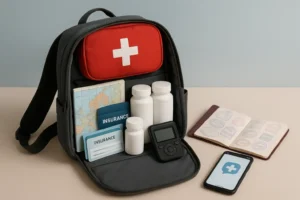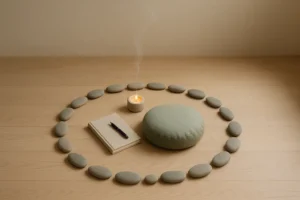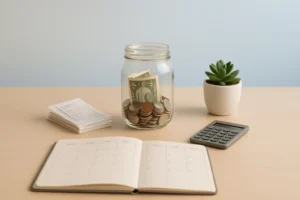Burnout affects millions of professionals but recognizing early warning signs can help prevent its debilitating effects. This comprehensive guide offers practical strategies for identifying personal burnout triggers and developing effective coping mechanisms, backed by insights from workplace wellness experts. Discover actionable techniques from theme days to microbreaks that can transform how you maintain energy, set boundaries, and preserve your mental wellbeing in today’s demanding work environment.
- Practice Microbreaks Between Tasks
- Play the Burnout Awareness Game
- Establish Clear Boundaries Between Work Areas
- Heed Subtle Warning Signs Early
- Track Resentment as Early Burnout Warning
- Monitor Physical Fatigue and Warning Signs
- Theme Days Reduce Cognitive Load
- Celebrate Progress to Sustain Energy
- Use Enthusiasm as Daily Measurement Tool
- Distance Yourself to Gain Fresh Perspective
- Time-Blocking Creates Essential Mental Checkpoints
- Conduct Monthly Purpose Check-Ins
Practice Microbreaks Between Tasks
Burnout happens when we dip below the threshold of well-being. But the goal isn’t just to prevent it—it’s to stay in the thriving zone. That starts with noticing early signs and making intentional shifts before depletion sets in.
As a high-achieving professional and executive coach, I’ve seen how our culture fuels the inner “hyper-achiever.” Many of us grow up learning that our worth is tied to performance—getting good grades, pleasing others, being the best. Over time, we often overlook our fundamental needs for rest, connection, and joy.
Imagine driving a car through rugged terrain with low tire pressure. Instead of refilling the tires, you press the gas harder. Eventually, the engine gives out. That’s how burnout happens. You feel drained, sick more often, disengaged—and sometimes resentful. Relationships suffer. Joy fades.
The good news? You don’t have to hit rock bottom to shift gears. Change can start with something as small as a breath.
One powerful practice I recommend: microbreaks. Microsoft’s 2021 research shows that short pauses—even a minute between meetings—can reduce stress buildup and boost focus. Some of my clients begin each day or reset between meetings with a one-minute breathing practice. It’s a small habit with a big impact.
To guide leaders in building resilience and avoiding burnout, I created the 3C’s of Resilience model: Care, Connect, Create (https://greenleafcoach.com/2024/11/06/resilience-in-the-face-of-adversity-lessons-from-national-to-personal-level/)
1. Care: Take Care of Yourself
Self-care means maintaining your mind and body so it can support your performance. Start small: hydrate, move, and connect with joy. Gratitude and mindfulness build reserves.
2. Connect: Align with What Matters
Resilience thrives in connection. Reach out to your people—friends, mentors, colleagues. Share honestly. Reconnect with your values and a deeper understanding of your “why.”
3. Create: Focus on What’s Within Your Control
Meaningful actions fuel motivation. What’s one thing you can do today that matters? Experiments—even in small doses—build resilience.
With awareness, support, and small, consistent practices, we not only avoid burnout, we thrive.

Play the Burnout Awareness Game
After you have spent time healing from your burnout, the best way to prevent it from happening again is building awareness. Understand that burnout is nothing but improper stress management over a long duration of time. So start with exploring what led you to experience burnout in the first place. What were the stressors that existed during those moments? This will help you identify triggers.
Another thing to do is use one of the tools I came up with called the Burnout Awareness Game. In this game, you essentially create a list of all the things that stress you out, that you can pull from your memory. If you come up with any other stressors at a later part of the game, you can add them to the list too. After this, you start creating a tally for how often the stressor shows up in your life. You can even make detailed notes around the stressor, specific to the situation. Ideally, keep this tally for at least two weeks so that you can track regular stressors. You can also do this for a few months so you can track patterns over longer durations that might slip by from your notice.
Once you have your tally, start by either eliminating stressors (especially those that happen way too often) or preparing for them ahead of time to lessen their damage. You can also have specific coping mechanisms for specific triggers. It is a matter of trial and error, but the more you work on managing your stress, the easier it gets to match strategies that will help in a specific situation. Also try to practice at least one stress management strategy on a daily basis. This will help in preventing stress from piling up and carrying over to another day, but also helps in just going to sleep from a more relaxed mindspace.
Hope this helps.

Establish Clear Boundaries Between Work Areas
As a business owner, I can attest to the challenges that come with managing a company like ALP Heating LTD., especially in the demanding HVAC industry. Burnout is something I’ve experienced firsthand, and it has taught me invaluable lessons about balance and well-being.
To prevent burnout from creeping in again, I prioritize self-reflection. I make it a point to regularly assess my workload and emotional state—asking myself tough questions like, “Am I feeling overwhelmed?” or “Do I need to delegate more?” This practice has been crucial in identifying triggers before they spiral into stress. For instance, during peak seasons when service calls surge, I’ve learned to communicate openly with my team about workload expectations, ensuring we’re all on the same page and can support one another effectively.
One strategy that has proven beneficial is establishing clear boundaries between work and personal time. I schedule “unplugged” hours where I focus on family and hobbies, allowing myself to recharge. This not only rejuvenates me but also enhances my productivity when I return to work. As the founder of ALP Heating, it’s essential to model this behavior for my team, fostering a company culture that values mental health.
Additionally, I incorporate mindfulness practices into my routine. Simple activities like short meditative breaks during the day or engaging in physical exercise help clear my mind and improve focus. These practices have been instrumental in cultivating resilience and equipping me with healthy coping mechanisms.
Lastly, I encourage feedback from my team. They often bring fresh perspectives that help me see things I may overlook, and this collaborative approach not only strengthens our bond but also enhances our operational efficiency. We are more than just coworkers; we are a family, and supporting each other through the stresses of our jobs is crucial.
At ALP Heating, we pride ourselves on providing reliable service while maintaining a strong commitment to our team’s well-being. By learning from past experiences with burnout and implementing these strategies, I aim to create a work environment where both my team and I can thrive. As I always say, “A well-balanced team is a more effective team.”
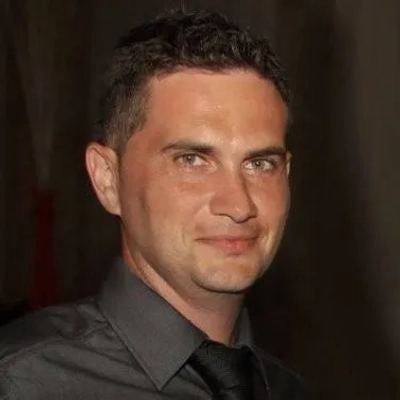
Heed Subtle Warning Signs Early
When I’ve experienced burnout, I’ve learned that ignoring the early warning signs only makes recovery harder. Now, I approach it by paying attention to subtle warning signs, such as irritability, disrupted sleep, or feeling resentful toward tasks I usually enjoy. First, pause and honestly name what’s draining me; second, create boundaries or shifts that align with my values.
I also rely on consistent coping mechanisms like daily grounding practices, scheduled recovery time, and reaching out for support before I hit a breaking point. Burnout taught me that prevention isn’t about doing more, it’s about staying attuned to yourself and protecting what matters most.

Track Resentment as Early Burnout Warning
Burnout has hit me more than once, and honestly, the biggest lesson I’ve taken isn’t about “working less” but about listening differently.
The thing no one warned me about is that burnout doesn’t just creep up from overwork—it sneaks in from misalignment. I once pushed through 80-hour weeks building a feature I wasn’t even convinced customers needed, and I felt more drained than when I worked longer hours on something I truly believed in. That taught me that one of the earliest signals of burnout isn’t exhaustion, it’s resentment. The moment I catch myself resenting a task, I treat that as a fire alarm: either delegate it, redesign it, or revisit why we’re doing it at all.
Another strategy that’s saved me is what I call “emotional post-mortems.” After a crunch period, I’ll actually write down what felt heavy—not just what was hard technically. Was it the ambiguity that wore me down? Too many context switches? Unclear expectations? By mapping those emotional triggers, I can spot patterns. For me, the real killer is decision fatigue. So I started front-loading decisions on Mondays, leaving the rest of the week for execution. That one change cut my burnout risk in half.
What’s counterintuitive is that coping mechanisms don’t have to be soft things like meditation or exercise (though I do those too). Sometimes the healthiest thing is a structural hack: fewer meetings, earlier delegation, or setting “good enough” as the finish line instead of “perfect.” That reframes work in a way that doesn’t just prevent burnout—it makes the whole thing sustainable.

Monitor Physical Fatigue and Warning Signs
The point at which burnout became most intense occurred when I attempted to push through my exhaustion by working harder. I began to monitor my physical fatigue as well as my initial warning signs, which included email avoidance, excessive weekend longing, and decision-making reluctance. I view these warning signs as critical alerts which require immediate attention.
What helps? Systems, not willpower. I schedule deep work periods and defend my weekend time completely while maintaining a list of non-essential activities I will not do today. The moment I notice myself becoming short-tempered or preoccupied, I understand it is time to disconnect and start fresh. The process of avoiding burnout proves to be unexciting, yet it saves me from spending more money.

Theme Days Reduce Cognitive Load
Learning from burnout meant recognizing that my nervous system needed predictability and routine to function optimally, despite believing I thrived on variety and spontaneity. I discovered that too much context switching between different types of work created cognitive load that accumulated into exhaustion over time.
My prevention strategy involves theme days where I focus on similar types of work rather than jumping between strategy, creative, and administrative tasks randomly. Mondays for client strategy, Tuesdays for content creation, Wednesdays for administrative work. This approach reduced decision fatigue and allowed me to enter flow states more easily, preventing the mental fragmentation that contributed to burnout.

Celebrate Progress to Sustain Energy
Burnout emerged during a season of nonstop achievement without pause for recognition. Success ironically drained me, because milestones blurred into endless new targets. There was no celebration, no reflection, only more demands layered over past accomplishments. Eventually, joy disappeared, and exhaustion arrived, despite outward victories. That emptiness revealed achievement without appreciation is hollow.
Now we celebrate progress as deliberately as we pursue goals. Recognizing milestones sustains energy, making growth feel rewarding. I spot burnout when I stop acknowledging small wins or gratitude fades from conversations. Coping involves reflection rituals, team celebrations, and deliberate pauses to appreciate effort. Burnout taught me recognition is fuel, not indulgence.

Use Enthusiasm as Daily Measurement Tool
Burnout revealed itself quietly when creative work I once loved began to feel like suffocation. I dismissed the dread as temporary stress, until it drained passion from projects that once fueled me. Pushing harder only worsened the spiral, and soon nothing felt inspiring or worthwhile. The eventual collapse was devastating, but it forced me to recognize joy as a compass. That realization reframed how I evaluate work and personal priorities daily.
Now I use enthusiasm as a metric as carefully as revenue or efficiency. When energy disappears consistently, I delegate, reimagine, or remove that responsibility entirely. Listening inward helps me prevent the creeping grip of burnout before it anchors. My coping strategies include rediscovering meaning, prioritizing tasks that spark curiosity, and honoring emotional alignment. Burnout showed me passion must be preserved deliberately, not taken for granted.

Distance Yourself to Gain Fresh Perspective
When I find myself too slow doing something or I’ve been thinking about a subject or situation for days without getting to a solution, I know I am definitely near the burnout level. It happened to me many times as a surgery resident. The academic and clinical burden were too much at that time and led me to high levels of stress.
Now, I try to relax and put some distance from the problem I’m having at work. This way I can see it from a different perspective, and I usually find a way to solve it.
Burnout is a very bad situation, especially because you feel really unproductive. I recommend to anybody facing this to relax more, go out, do some workout, some breathing exercises, and don’t focus too much on your work. It may seem strange but it is definitely going to help you be more efficient.

Time-Blocking Creates Essential Mental Checkpoints
Learning from my experience with burnout taught me that pushing through exhaustion only leads to diminishing returns. I now rely on time-blocking as my primary prevention strategy, which involves breaking my workday into focused segments with intentional breaks between them. This approach helps me maintain consistent energy levels throughout the day while still accomplishing my goals. The structured breaks serve as checkpoints where I can assess my mental state before fatigue becomes overwhelming.
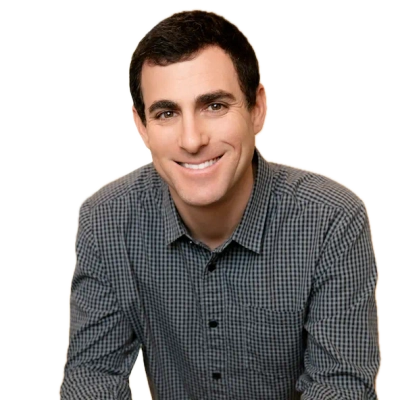
Conduct Monthly Purpose Check-Ins
The most important burnout lesson was understanding that recovery is not just about rest, rather it’s about rebuilding meaning and purpose that work stress had eroded. I realized I had become so focused on productivity metrics that I had lost connection to the impact and fulfillment that originally motivated me in digital marketing.
My prevention system includes monthly purpose check-ins where I review which projects energized versus depleted me and why. This reflection helps me recognize when work becomes mechanically driven rather than purpose driven, an early warning sign of potential burnout. The coping mechanism involves actively seeking projects that align with personal values and declining opportunities that offer money without meaning.




